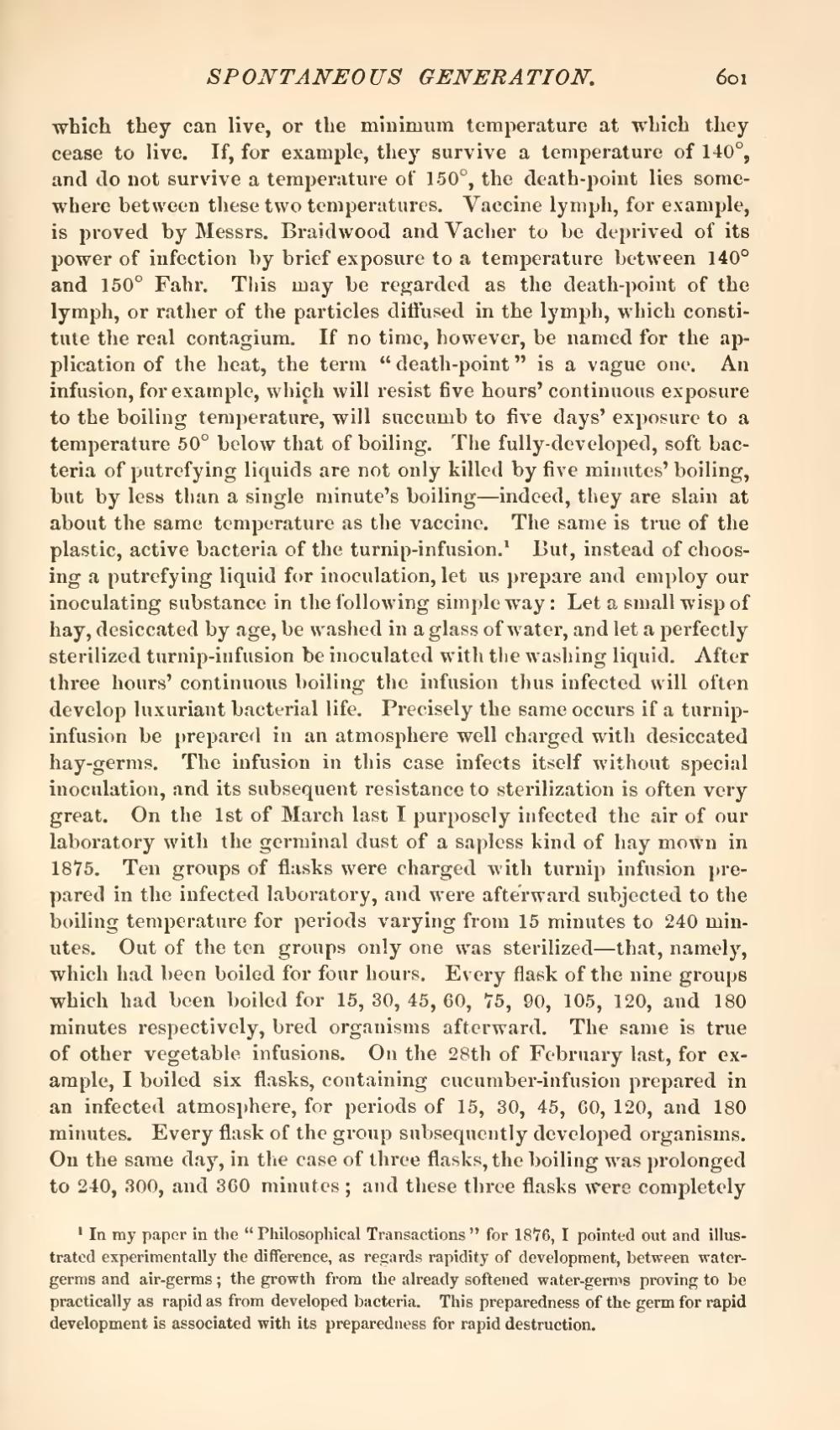which they can live, or the minimum temperature at which they cease to live. If, for example, they survive a temperature of 140°, and do not survive a temperature of 150°, the death-point lies somewhere between these two temperatures. Vaccine lymph, for example, is proved by Messrs. Braidwood and Vacher to be deprived of its power of infection by brief exposure to a temperature between 140° and 150° Fahr. This may be regarded as the death-point of the lymph, or rather of the particles diffused in the lymph, which constitute the real contagium. If no time, however, be named for the application of the heat, the term "death-point" is a vague one. An infusion, for example, which will resist five hours' continuous exposure to the boiling temperature, will succumb to five days' exposure to a temperature 50° below that of boiling. The fully-developed, soft bacteria of putrefying liquids are not only killed by five minutes' boiling, but by less than a single minute's boiling—indeed, they are slain at about the same temperature as the vaccine. The same is true of the plastic, active bacteria of the turnip-infusion.[1] But, instead of choosing a putrefying liquid for inoculation, let us prepare and employ our inoculating substance in the following simple way: Let a small wisp of hay, desiccated by age, be washed in a glass of water, and let a perfectly sterilized turnip-infusion be inoculated with the washing liquid. After three hours' continuous boiling the infusion thus infected will often develop luxuriant bacterial life. Precisely the same occurs if a turnip infusion be prepared in an atmosphere well charged with desiccated hay-germs. The infusion in this case infects itself without special inoculation, and its subsequent resistance to sterilization is often very great. On the 1st of March last I purposely infected the air of our laboratory with the germinal dust of a sapless kind of hay mown in 1875. Ten groups of flasks were charged with turnip infusion prepared in the infected laboratory, and were afterward subjected to the boiling temperature for periods varying from 15 minutes to 240 minutes. Out of the ten groups only one was sterilized—that, namely, which had been boiled for four hours. Every flask of the nine groups which had been boiled for 15, 30, 45, 60, 75, 90, 105, 120, and 180 minutes respectively, bred organisms afterward. The same is true of other vegetable infusions. On the 28th of February last, for example, I boiled six flasks, containing cucumber-infusion prepared in an infected atmosphere, for periods of 15, 30, 45, 60, 120, and 180 minutes. Every flask of the group subsequently developed organisms. On the same day, in the case of three flasks, the boiling was prolonged to 240, 300, and 360 minutes; and these three flasks were completely
- ↑ In my paper in the "Philosophical Transactions" for 1876, I pointed out and illustrated experimentally the difference, as regards rapidity of development, between water-germs and air-germs; the growth from the already softened water-germs proving to be practically as rapid as from developed bacteria. This preparedness of the germ for rapid development is associated with its preparedness for rapid destruction.
